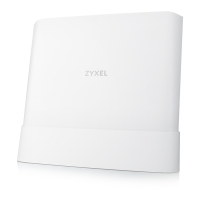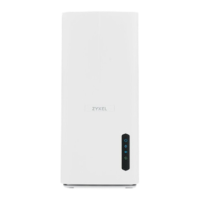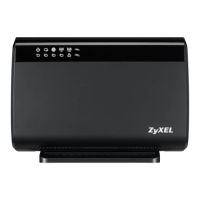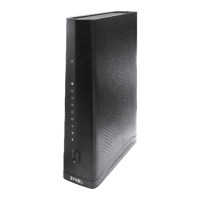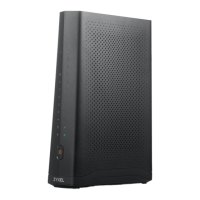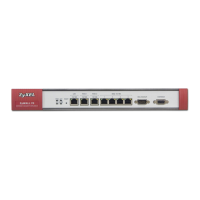EX3510-B1 User’s Guide
88
CHAPTER 7
Wireless
7.1 Wireless Overview
This chapter describes the Zyxel Device’s Network Setting > Wireless screens. Use these screens to set up
your Zyxel Device’s WiFi connection and security settings.
7.1.1 What You Can Do in this Chapter
This section describes the Zyxel Device’s Wireless screens. Use these screens to set up your Zyxel Device’s
wireless connection.
• Use the General screen to enable WiFi, enter the SSID and select the wireless security mode (Section
7.2 on page 89).
• Use the Guest/More AP screen to set up multiple wireless networks on your Zyxel Device (Section 7.3
on page 94).
• Use the MAC Authentication screen to allow or deny wireless clients based on their MAC addresses
from connecting to the Zyxel Device (Section 7.4 on page 97).
• Use the WPS screen to enable or disable WPS, view or generate a security PIN (Personal Identification
Number) (Section 7.5 on page 98).
• Use the WMM screen to enable WiFi MultiMedia (WMM) to ensure quality of service in wireless
networks for multimedia applications (Section 7.6 on page 100).
• Use the Others screen to configure wireless advanced features, such as the RTS/CTS Threshold
(Section 7.7 on page 101).
• Use the Channel Status screen to scan WiFi channel noises and view the results (Section 7.8 on page
103).
• Use the MESH screen to allow wireless clients to roam seamlessly between Mesh supported devices in
your Mesh network by using the same SSID and WiFi password as well as allow dual-band wireless
client devices, to use the less-congested and higher capacity 5 GHz band, leaving the more
crowded 2.4 GHz band available for legacy clients. (Section 7.9 on page 104).
7.1.2 What You Need to Know
Wireless Basics
“Wireless” is essentially radio communication. In the same way that walkie-talkie radios send and
receive information over the airwaves, wireless networking devices exchange information with one
another. A wireless networking device is just like a radio that lets your computer exchange information
with radios attached to other computers. Like walkie-talkies, most wireless networking devices operate
at radio frequency bands that are open to the public and do not require a license to use. However,
wireless networking is different from that of most traditional radio communications in that there are a
number of wireless networking standards available with different methods of data encryption.

